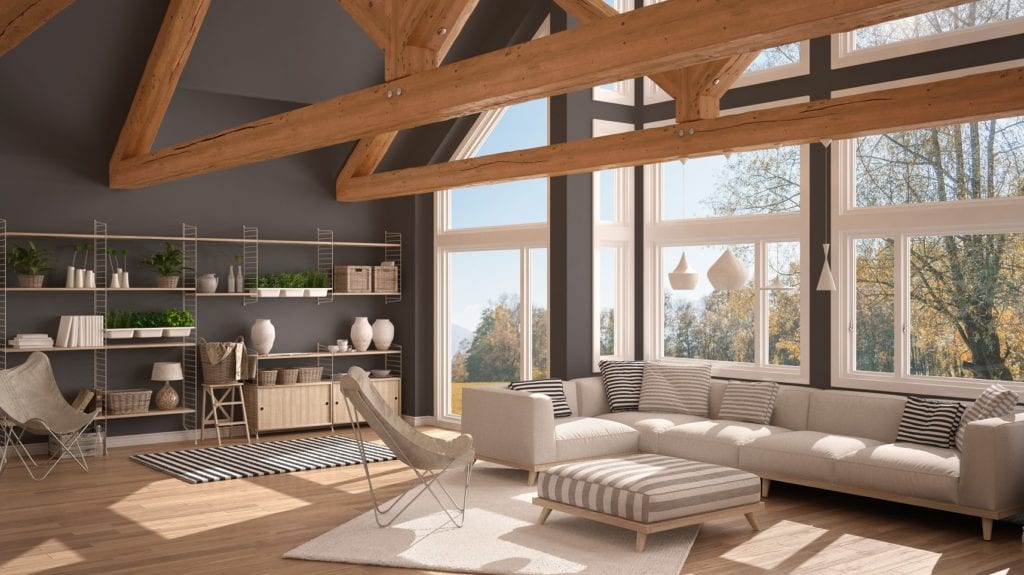
If you’re interested in building a green home — a home with energy-efficient and environmentally sustainable features — you may think you can’t afford to go green because it’s too expensive.
But that’s not necessarily the case.
There are plenty of ways you can incorporate green features into a new home that won’t break the bank — and save you money in the long run. “You don’t have to spend a lot to save a lot,” says Brian Ng, communications manager for Energy Star Residential Programs. “You’ll be improving the comfort level of your home and saving money at the same time — it’s a dual benefit.”
Most consumers are familiar with Energy Star-rated appliances, but it also has a home building certification process of inspections and testing set by the U.S. Environmental Protection Agency, Energy Star certified new homes.
According to Ng, it costs an average of $2,500 to $3,000 more for a builder to build a home to Energy Star requirements. That’s not a huge outlay over the life of the home, especially considering that these homes are 15 percent to 30 percent more energy efficient than a typical new home for an average annual savings of $300. Many of the features are tried and true methods, such as high-performance insulation and windows or energy-efficient appliances and lighting.
“It varies on what you install,” Ng says, “but the payback is very good. As energy costs go up, your savings go up. It’s a sound investment that pays you back year after year.”
Dennis Celsor of Texas-based Built Green Custom Homes is of a similar mindset. “Our philosophy is to design the energy-efficient features in from the get-go and it pervades everything you do in a house,” he says.
Start With Planning
It all comes down to good planning, Celsor says. “We have to design and build for the climate we’re in.”
For any home, the sun can be both friend and foe, depending on where you live. In the winter, sunshine can help warm your home and perhaps help reduce how often your heater needs to run. In the summer, however, it can turn your home into an oven.
That is where the solar orientation of your home comes in. When choosing a lot to build on or if you already have a piece of land, you need to determine how your home will be situated and how the sun will hit it at different times of the day and at different times of year.
With proper orientation, you’re setting your home up to be more energy efficient — and cost-effective — in the long run. But not just one thing makes a home energy efficient, says Celsor. In addition to your home’s orientation, you should consider its shape and size and the number, size and placement of windows, which are “energy hogs.”
Properly shading your windows — even with an optimal solar orientation — can help reduce daytime heating from the sun. You can incorporate several different methods into your home’s design, from an extended overhang or awnings to a covered porch or pergola.
Celsor is a fan of the wider overhangs and pointed out that this is in keeping with the Prairie style of famed architect Frank Lloyd Wright. “With the advent of air conditioning, we’ve forgotten a lot of the basic building principles from a hundred years ago,” he says. “We need to (get) back to those older principles.”
He added that another benefit to a wider overhang around your home is increased durability. “Your walls stay drier and last longer.”
Your Home’s Infrastructure
Good energy-efficient planning extends to your home’s infrastructure as well because building in green features, such as insulation or a high-performance HVAC system, will be more cost-effective over time. Green Built is a proponent of spray-foam insulation throughout the house. “Our goal is to eliminate the oven in the attic by transferring the battle from the ceiling plane to the roof,” Celsor says.
Spray-foam insulation is a prime example of an added cost on the front-end that will provide a good return on the investment. To add this type of insulation to a 3,000-sq. ft. house is about a 1 percent upgrade in cost or about $3,000, Celsor says. “But it will make a huge difference in your energy costs.”
The right air conditioning and heating unit can also have a positive effect on your energy bills. Celsor cautioned that bigger is not always better in this case. Instead, he recommended that home buyers opt for a system that provides zone control, which allows you to adjust your system to meet the conditions of that day.
Of course, the most tangible evidence of the cost savings of energy-efficient features is reflected in your monthly electric bill. Celsor related the story of a client who built a 4,100-sq. ft. home in Texas during the summer of 2011, one of the hottest on record. Using spray-foam insulation, a zone AC unit and properly sealing all ductwork among other energy-efficient features, the homeowner’s electric bill for the month of August came to just $138 dollars.

Judy Marchman is an Austin, Texas-based freelance writer and editor who, during her 20+-year career, has written on a diverse number of topics, from horses to lawyers to home building and design, including for NewHomeSource.com. Judy is the proud owner of a new construction home and has gained plenty of story inspiration from her home ownership experiences.
A horse racing aficionado, she also has written on lifestyle, personality, and business topics for Keeneland magazine and Kentucky Monthly, as well as sports features for BloodHorse, a weekly Thoroughbred racing publication, and the Official Kentucky Derby Souvenir Magazine. When she’s not in front of her laptop, Judy can usually be found enjoying a good book and a cup of tea, or baking something to go with said cuppa.

 How to Pick Major Design Options for Your New Home
How to Pick Major Design Options for Your New Home